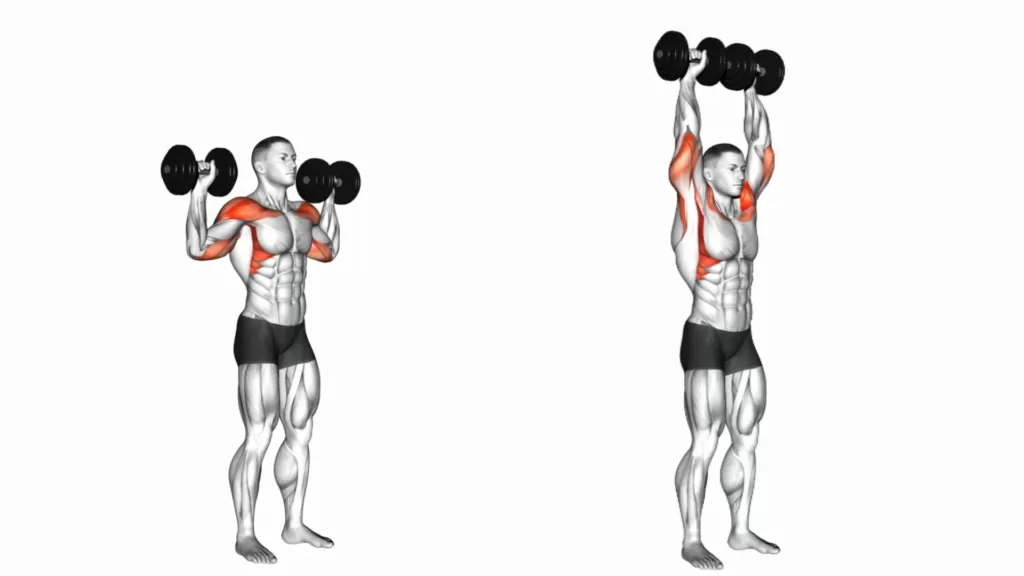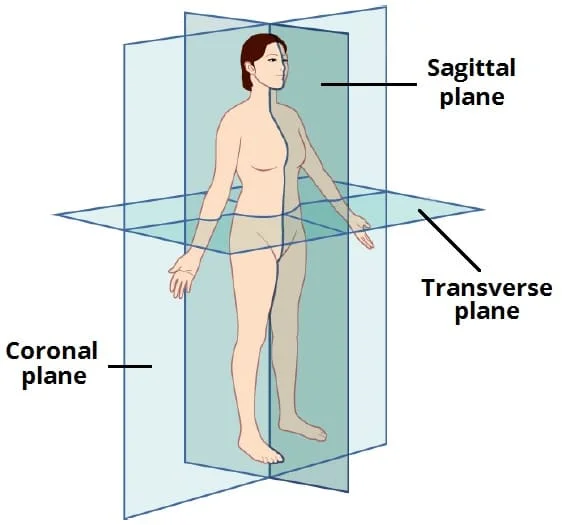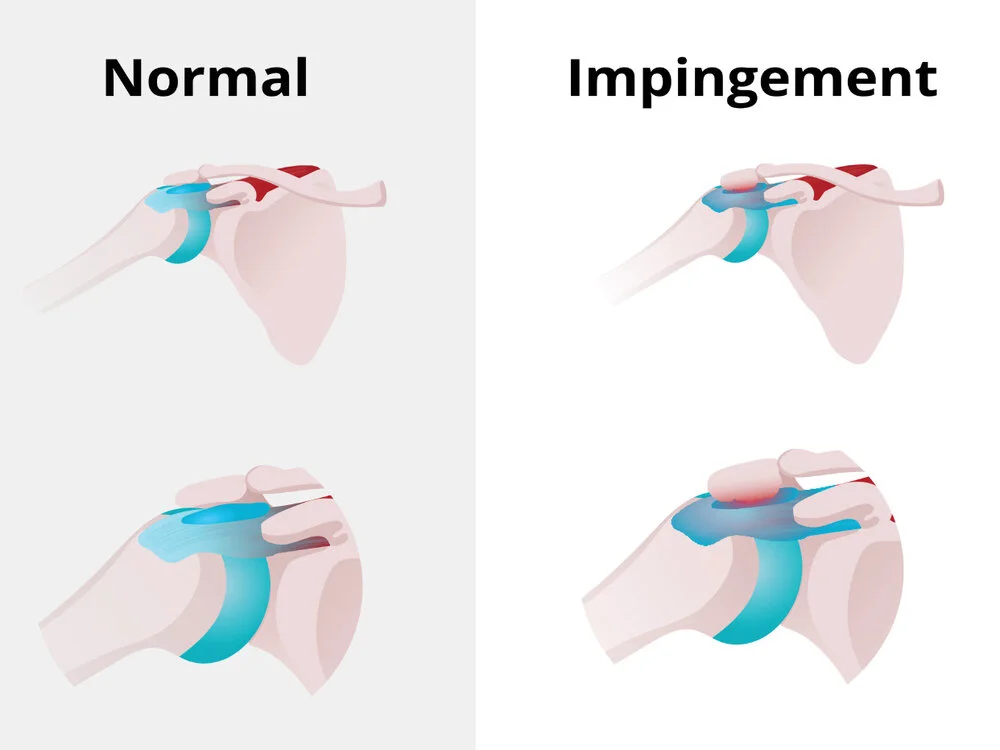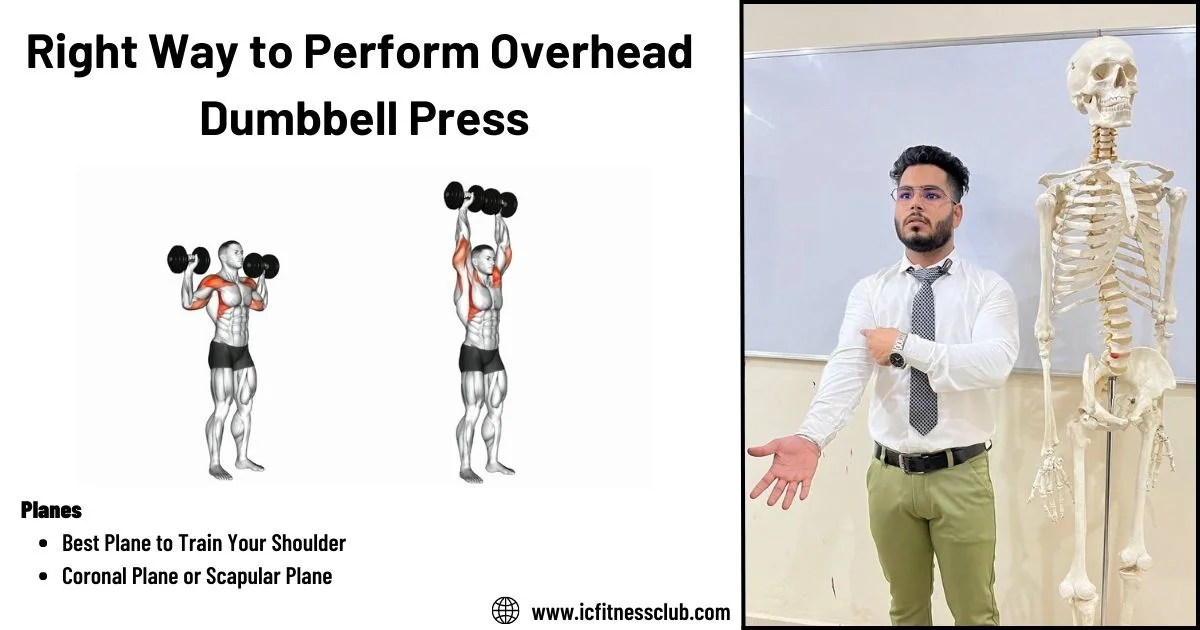The Right Way to do overhead Dumbbell Press – IC Fitness Club
The overhead dumbbell press is a popular exercise for building strength and muscle in the shoulders and upper arms. Here are the steps to perform the overhead dumbbell press:
- Stand with your feet shoulder-width apart and hold a dumbbell in each hand at shoulder level with your palms facing forward. Your elbows should be bent and pointing out to the sides.
- Brace your core and press the dumbbells up overhead until your arms are fully extended. Make sure to keep your wrists straight and your elbows locked at the top of the movement.
- Lower the dumbbells back down to shoulder level with control.
- Repeat for the desired number of repetitions.
It’s important to maintain proper form throughout the exercise to avoid injury and maximize the benefits. Start with a weight that you can lift comfortably and gradually increase the weight as you build strength.

Plane of Overhead Dumbbell Press

The plane of motion for the overhead dumbbell press is vertical. This means that the movement occurs in a straight line up and down, with the dumbbells traveling directly above the shoulders as they are pressed overhead. It’s important to maintain a straight line of motion and avoid allowing the dumbbells to drift forward or backward, as this can place undue stress on the shoulders and potentially lead to injury. Keeping the elbows close to the body throughout the movement can help ensure proper alignment and reduce the risk of injury.
Best Plane to perform the Shoulder Dumbbell Press Coronal or Scapular
The plane of motion for the shoulder dumbbell press depends on the specific variation of the exercise you are performing, as well as your individual fitness goals and needs. However, generally speaking, the most commonly used plane for the shoulder dumbbell press is the coronal plane.
The coronal plane is also known as the frontal plane, and it divides the body into front and back halves. In the case of the shoulder dumbbell press, this plane involves lifting the weights straight up in front of the body, keeping the elbows close to the sides, and pressing the weights overhead in a straight line. This plane of motion targets the anterior (front) and medial (middle) heads of the shoulder muscles, as well as the triceps.
On the other hand, the scapular plane involves lifting the weights at a 30-45 degree angle in front of the body, allowing the shoulder blades to rotate and protract. This plane of motion targets the scapular stabilizers, such as the serratus anterior, and can be beneficial for improving shoulder stability and reducing the risk of injury.
Shoulder Impingement
Shoulder impingement is a common condition that occurs when the tendons or bursa (a fluid-filled sac that cushions and reduces friction between bones, tendons, and muscles) in the shoulder become compressed or pinched. This can cause pain, weakness, and a limited range of motion in the shoulder.
 Some common causes of shoulder impingement include overuse, poor posture, muscle imbalances, and structural abnormalities in the shoulder joint. Athletes who participate in sports that involve overhead movements, such as swimming, baseball, and tennis, are particularly susceptible to developing shoulder impingement.
Some common causes of shoulder impingement include overuse, poor posture, muscle imbalances, and structural abnormalities in the shoulder joint. Athletes who participate in sports that involve overhead movements, such as swimming, baseball, and tennis, are particularly susceptible to developing shoulder impingement.
Best Plane to Avoid Shoulder Impingement
To avoid shoulder impingement, it’s important to perform exercises in a plane of motion that allows for optimal shoulder joint mechanics and reduces the risk of compression or pinching of the tendons and bursa in the shoulder. The best plane to avoid shoulder impingement is generally the scapular plane.
The scapular plane involves lifting the arms at a 30-45 degree angle in front of the body, allowing the shoulder blades to rotate and protract. This plane of motion reduces the risk of compression in the shoulder joint and allows for greater activation of the muscles that stabilize the shoulder blade, such as the serratus anterior.
To Become a Certified Personal Trainer,
To Read Our Blogs





